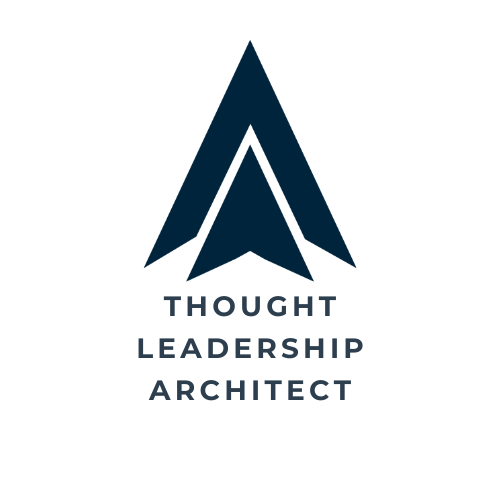by Brigetta Margarietta
Thought leadership is more than having big ideas. It’s about delivering clarity, credibility, and confidence in ways that influence how people think and act. User Experience (UX), on the other hand, is more than screens and buttons. It’s the discipline of making those ideas tangible, human, and friction-free.
When combined, UX and thought leadership form a powerful duo. One shapes ideas that inspire; the other designs pathways that make them accessible. As Don Norman, the pioneer of UX design, once said: “It’s not about technology. It’s about people.” Thought leadership without UX risks being lofty and inaccessible. UX without thought leadership risks being functional but forgettable. Together, they design trust.
UX as a Medium of Influence
In today’s marketplace, audiences judge authority not just by what you say, but how you deliver it. A white paper that reads like a legal brief, or a SaaS platform with cryptic navigation, both fail to inspire confidence. UX becomes the delivery mechanism of authority.
- In B2B spaces, executives expect clarity and efficiency. A report or toolkit that is beautifully designed, scannable, and frictionless signals expertise.
- In consumer experiences, every touchpoint — from error messages to onboarding flows — communicates whether a brand is thoughtful or careless.
As Jared Spool, UX researcher, puts it: “Good design, when it’s done well, becomes invisible. It’s only when it’s done poorly that we notice it.”
This invisibility is the hallmark of trustworthy thought leadership — ideas delivered so seamlessly that they resonate, not distract.

The Strategic Intersection: Why UX Matters for Thought Leaders
1. Accessibility as Authority
Thought leaders are often tackling complex topics — AI ethics, climate solutions, financial systems. Without UX, those insights remain locked in jargon or PDFs nobody reads. With UX, complexity transforms into approachable, actionable wisdom.
Consider Harvard Business Review: its reputation as a thought leadership hub is amplified by intuitive site navigation, scannable article formats, and multimedia integration. The delivery elevates the authority.
2. Consistency Builds Credibility
UX emphasizes consistent patterns: buttons, flows, copy tone. Thought leadership thrives on consistency too — publishing regularly, reinforcing core messages, and staying aligned with brand values. When the two align, audiences don’t just consume your content; they trust your voice.
3. Engagement Signals Thoughtfulness
A cluttered onboarding or clunky report undermines your credibility. Conversely, a delightful, easy-to-use interface signals intentionality. For thought leaders, this means designing audience journeys — making it easy to read, share, comment, and act on your insights.
Case Studies: Where UX and Thought Leadership Meet
- Apple: While often cited for design, Apple’s UX is also a form of thought leadership. Its interfaces teach the market to expect elegance and simplicity. Each keynote isn’t just a product release; it’s a lesson in how UX shapes authority.
- Dropbox: Recently, Dropbox has positioned itself as more than storage — offering AI-powered summaries and collaboration features. Its UX choices (like minimal friction onboarding) become thought leadership in how teams work.
- IDEO: As a design consultancy, IDEO blends UX and thought leadership seamlessly, publishing toolkits with layouts that are as intuitive as they are visionary.
Expert Perspectives
- Steve Krug, author of Don’t Make Me Think: “Usability is about serving people, not impressing them. The simplest design communicates the deepest expertise.”
- Jakob Nielsen, Nielsen Norman Group: “A bad website is like a grumpy salesperson. It makes people go away.” In thought leadership terms, poor UX makes your ideas walk out the door.
- Forrester Research notes that: “Companies that prioritize customer experience see 1.6x higher brand awareness and 1.9x higher average order value.” In other words, UX directly amplifies influence.
The Thought Leadership Architect™ Framework: UX Integration
At Thought Leadership Architect™, we champion the Three Pillars: Clarity, Consistency, Credibility. UX becomes the practical toolkit to embody each pillar:
- Clarity: Break down complex ideas with plain language microcopy, intuitive visuals, and structured flows.
- Consistency: Maintain a unified brand tone across reports, websites, and digital tools.
- Credibility: Signal expertise through polished, professional, user-friendly content delivery.
Whether creating a white paper, microsite, or AI-driven product demo, UX is how you architect authority.
Future Outlook: AI, UX, and Thought Leadership
AI is reshaping how content is created, delivered, and consumed. But even in AI-powered environments, UX will be the differentiator.
Imagine:
- AI-generated summaries of complex reports delivered in digestible, interactive dashboards.
- Thought leaders deploying custom GPTs with conversational UX that extends their authority into 24/7 accessibility.
- Interactive digital playbooks where design and content merge, guiding audiences through complex strategies step by step.
The future of thought leadership is not just what you know, but how gracefully your insights flow into someone else’s life.
UX and thought leadership are not separate disciplines — they are complementary forces. UX ensures your big ideas land with clarity, consistency, and credibility. Thought leadership ensures your UX choices have depth and authority behind them.
In the digital age, the brands and leaders who thrive will be those who design trust — not just by what they say, but by how every interaction feels.
Or as Don Norman reminds us: “Design is really an act of communication, which means having a deep understanding of the person with whom the designer is communicating.”
Bibliography
- Norman, Don. The Design of Everyday Things. Basic Books, 2013.
- Krug, Steve. Don’t Make Me Think. New Riders, 2014.
- Nielsen Norman Group. “UX and Usability.” nngroup.com.
- Forrester Research. Customer Experience Drives Business Growth, 2022.
- Spool, Jared. “The State of UX.” UIE Reports, 2021.
#ThoughtLeadership #UXDesign #UserExperience #DigitalStrategy #AIUX #ThoughtLeadershipArchitect #ContentStrategy #ClarityConsistencyCredibility #DesignTrust #FutureOfWork



Leave a Reply